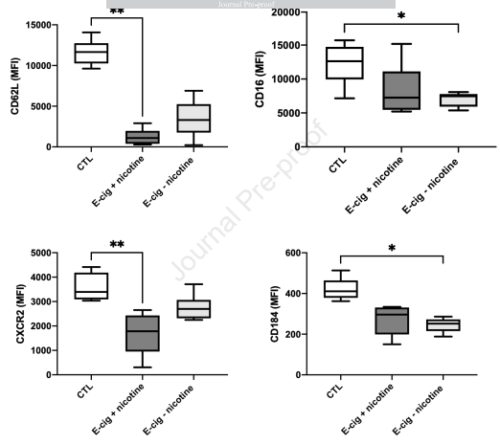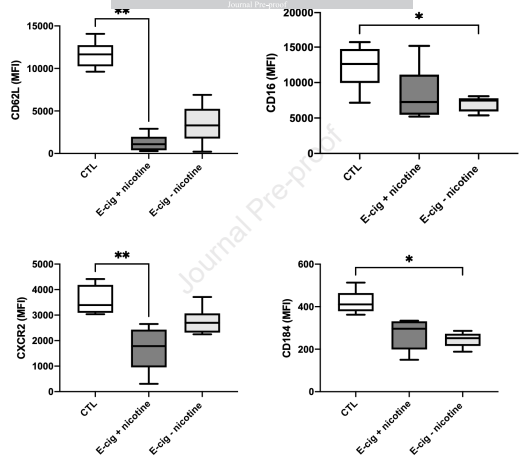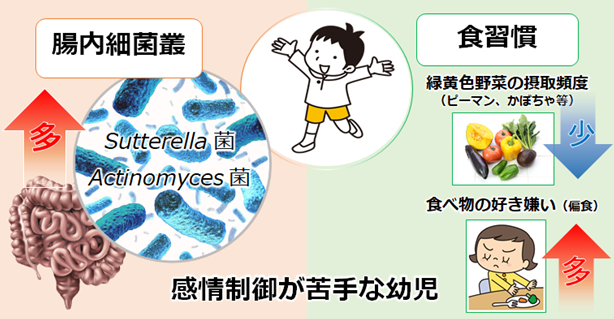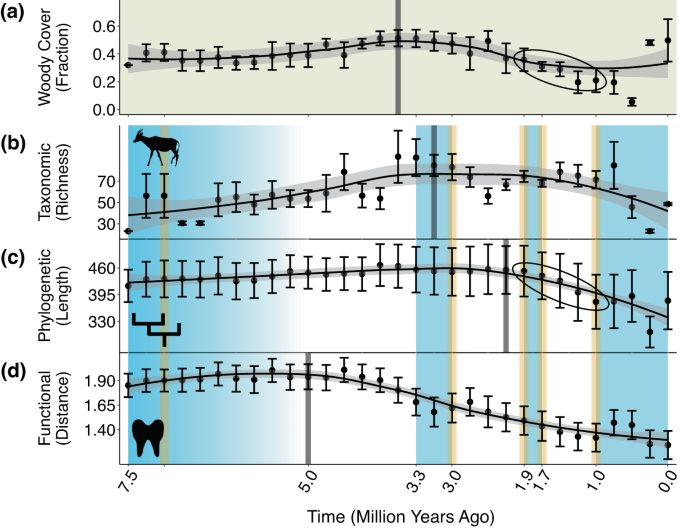2023-09-05 バーミンガム大学
◆この研究は、電子たばこの煙を吸入することが、人間の免疫システムの最初の防御線である好中球を損傷する可能性があることを示しており、これまでの研究ではたばこの喫煙による好中球への損傷が長期間の肺損傷につながることが示されています。
◆これは、喫煙者が喫煙をやめるのに役立つ証明された低リスクのツールである電子たばこが、無害ではないことを示すものであり、電子たばこを使用した長期の研究を支援する必要性を強調しています。
<関連情報>
- https://www.birmingham.ac.uk/news/2023/vaping-renders-immune-cells-unable-to-move-to-meet-threats
- https://www.sciencedirect.com/science/article/pii/S0091674923011077
電子タバコの蒸気は好中球に糸状アクチンを蓄積させ機能不全にさせる E-cigarette vapour renders neutrophils dysfunctional due to filamentous actin accumulation
Alice E. Jasper, Aduragbemi A. Faniyi, Lauren C. Davis, Frances S. Grudzinska, Robyn Halston, Jon Hazeldine, Dhruv Parekh, Elizabeth Sapey, David R. Thickett, Aaron Scott
Journal of Allergy and Clinical Immunology Available online: 5 September 2023
DOI:https://doi.org/10.1016/j.jaci.2023.08.025

Abstract
Background
Electronic (e-)cigarette use continues to rise despite concerns of long-term effects, especially the risk of developing lung diseases such as chronic obstructive pulmonary disease (COPD). Neutrophils are central to the pathogenesis of COPD, with changes in phenotype and function implicated in tissue damage.
Objective
This study aimed to measure the impact of direct exposure to nicotine containing and nicotine free e-cigarette vapour on human neutrophil function and phenotype.
Methods
Neutrophils were isolated from the whole blood of self-reported non-smoking, non-vaping healthy volunteers. Neutrophils were exposed to 40 puffs of e-cigarette vapour generated from e-cigarette devices using flavourless e-liquid with and without nicotine before functions, deformability and phenotype were assessed.
Results
Neutrophil surface marker expression was altered, with CD62L and CXCR2 expression significantly reduced in neutrophils treated with e-cigarette vapour containing nicotine. Neutrophil migration to interleukin 8, phagocytosis of Escherichia. coli and Staphylococcus. aureus pHrodo bioparticles, oxidative burst response and phorbol 12-myristate 13-acetate stimulated neutrophil extracellular trap formation were all significantly reduced by e-cigarette vapour treatments, independent of nicotine content. E-cigarette vapour induced increased levels of baseline polymerised filamentous (F-)actin levels in the cytoplasm, compared to untreated controls.
Conclusion
The significant reduction in effector neutrophil functions after exposure to high power e-cigarette devices, even in the absence of nicotine, is associated with excessive F-actin polymerisation. This highlights the potentially damaging impact of vaping on respiratory health and reinforces the urgency of research to uncover the long-term health implications of e-cigarettes.



